Collaborations + Exhibitions
Graphic Design Museum
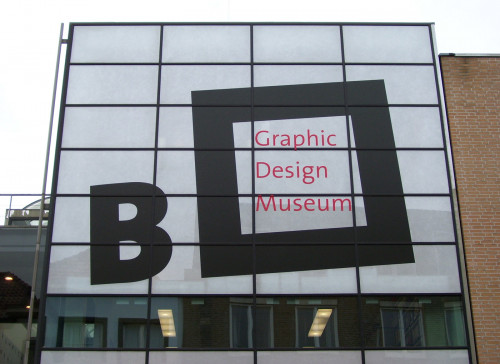
The new building’s façade, 2008. Graphic design by Frederik de Wal. The museum was later renamed Museum Of The Image, and De Wal’s well-designed identity was abandoned for something less bookish and more… messy.
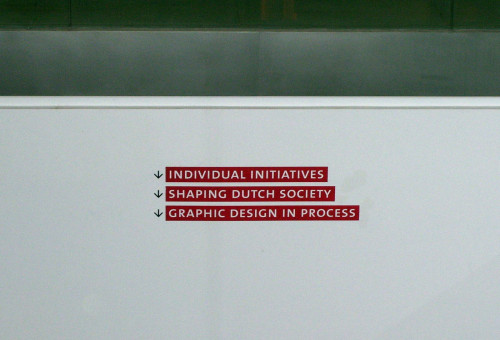
Entry to the basement, where the permanent exhibition that I contributed to was located. Frederik de Wal used Lucas de Groot’s Thesis (TheSans and TheMix) for all signage elements.
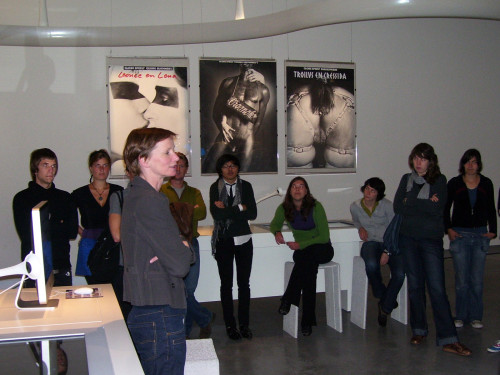
Esther Cleven giving an introduction to my students from St. Lucas Design School in Gent. I took them to Breda while a guest teacher in 2008. In the background a series of provocative theatre posters by Amsterdam’s Studio Anthon Beeke, 1980s.
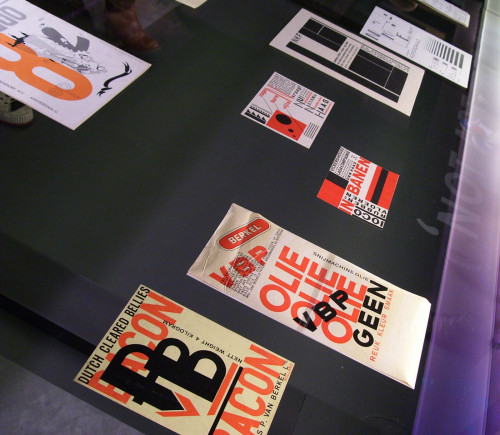
Work by Paul Schuitema and Piet Zwart, the two major pioneers of Dutch constructivism; both were engaged in left-wing politics. Both also did cutting-edge graphic work for commercial clients.

Chris Lebeau’s striking poster for the art dealer Willem Brok. Woodcut, 1919. The hand-lettering on this poster became the model for Font Bureau’s Brok typeface.
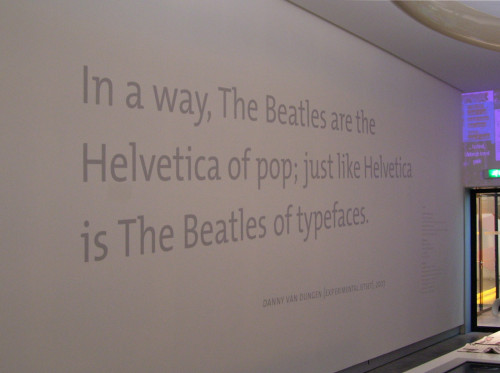
Quotes on the wall, set in TheMix. These were added after I concluded my collaboration.
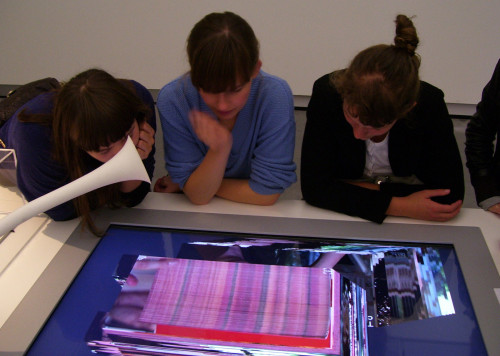
Some of my students fascinated by the interactive information retrieval tables designed by The Hague studio Lust. I’m quite convinced that it was my idea to invite Lust to contribute these devices to the permanent exhibition. :-)
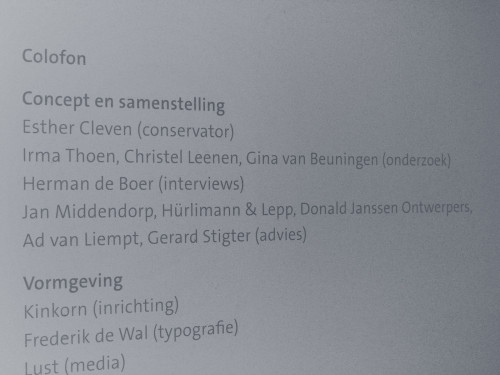
That’s me in the credits, losing my religion.
Graphic Design Museum
Consultancy for the permanent exhibition of a new museum in Breda, the Netherlands
I met German design historian Esther Cleven while in The Hague in 2000 to prepare ‘Ha, daar gaat er een van mij’, my book about 50 years of graphic design in my hometown. A specialist of Dutch graphic design, she was working at the Art & Design department of the Dutch Mail. The following year, the art and design museum De Beyerd in Breda (southern Netherlands) announced its plans to restructure, and re-open as a museum of graphic design. Esther became curator of graphic design. The re-opening was scheduled for 2004, but local protests against the partial demolition of the old building to make room for new spaces led to major delays, and gave Esther a looong time to think about the concept of the permanent exhibition, which was to focus on Dutch graphic design throughout the 20th century and beyond. She invited me to be her sparring partner. As I’d moved to Berlin, some travelling ensued. In 2006 and 2007 we held working sessions in Breda, Berlin and Amsterdam (where Esther was a professor of graphic design history). There had been an initial brainstorm at De Beyerd with some of the sharpest minds in the field: Wim Crouwel, Anthon Beeke, Paul Hefting, and others. After that meeting, my ride to Amsterdam was unforgettable. Wim Crouwel gave me a lift in his vintage Morgan – a car I had been totally intrigued by since I was eleven, and collecting car catalogues.
Although we have different backgrounds – she’s an academic, I’m a practitioner who also writes – Esther and I have similar views on the history of graphic design. We like to think that graphic design was originally invented by idealists as a democratic tool – to present information to people in a ways that give access to great ideas. Modern graphic design successfully competed with the romantic, kitschy artwork of early advertising and packaging to add directness, honesty, and punch; the usurpation of graphic design by advertising didn’t happen (at least on the European continent) until the 1960s and ’70s, and there has been firm resistance ever since.
We came up with a rather theatrical basic plan covering the three main phases of 20th-century Dutch design. This more or less concluded my contribution. Our proposal then went through a series of simplifications, and some of its more unorthodox ideas went out of the window; but when I saw the result at my first visit, visiting the museum with a class of Gent students in 2008, I was still quite pleased to have contributed.